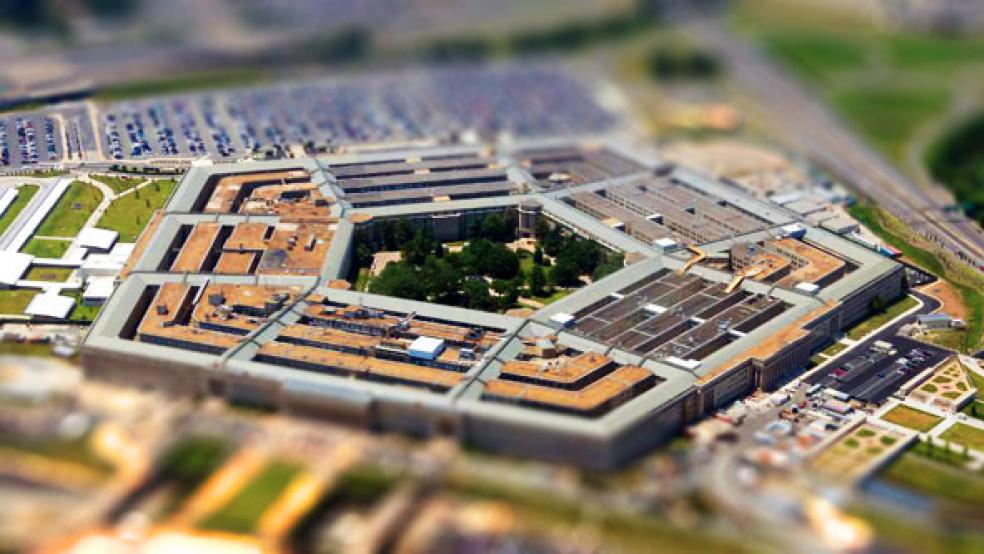President Obama’s final Defense Department budget request shows that no matter who succeeds him in the Oval Office next year, Democrat or Republican, the Pentagon will likely continue to consume more and more taxpayer money.
The agency’s $582.7 billion proposal for fiscal year 2017 holds few surprises, since the topline was defined as part of the two-year budget deal struck by the White House and congressional leaders last September.
Related: $583 Billion Defense Budget Covers Russia, China, and ISIS with New Weapons
The total gives the Pentagon a 2.2 percent increase over last year. It includes $523.9 billion in base discretionary spending, a $2.2 billion boost, and $58.8 billion for the Overseas Contingency Operations (OCO) account, commonly referred to as the war fund, a $200 million increase.
The agency also laid out a five-year fiscal roadmap that anticipates the Pentagon’s expected base budgets through 2021. The amount jumps to $556.7 billion in 2018, then goes to $564.8 billion, $570.4 billion and finally $585.2 billion.
Since this blueprint will be the last one produced before a new administration takes over, those numbers will likely change.
“Presidential budget requests are just that: requests. They are the starting point for negotiation but typically a decent indicator of general trend lines,” said Mackenzie Eaglen, a defense analyst at the American Enterprise Institute.
But, she noted, the the five-year plan exceeds the spending caps enacted by both Obama and a Republican Congress by $113 billion, making it a less reliable future indicator. And unlike other federal agencies, the Pentagon has never accounted for what it spends--it's never had an audit.
Related: As National Debt Hits $19 Trillion, a Spending Showdown Looms in Congress
However, it’s not unlikely that the numbers will grow, considering the tough talk that has dominated the 2016 campaign trail and the willingness by Congress to raise spending ceilings.
For example, all of the top-tier Republicans contenders have charged that the military has been “gutted” by Obama and needs a major cash infusion to combat threats such as ISIS and compete with technological rivals including Russia and China.
The candidates have promised to grow the Army and Marine Corps by the thousands, build more ships for the Navy and deliver more jets for the Air Force all the while revamping the country’s nuclear deterrent and investing in new technologies.
The promises add up to hundreds of millions if not billions in new spending that would likely sail through a Republican-controlled Congress that has long chided Obama for short-changing efforts to confront the threats facing the country.
It’s less clear how the numbers might grow under a Democratic presidency. Sen. Bernie Sanders (I-VT) has avoided getting into specifics when it comes to the U.S. military, other than saying he wants to avoid sending troops into another “quagmire” in the Middle East. In a town hall event last week, former Secretary of State Hillary Clinton wouldn’t rule out the use of military force around the globe, which could impose new costs on the Pentagon.
Related: CBO Predicts First Deficit Spike Since 2009
In the meantime, there is already pressure to increase spending. Congressional defense hawks argue the war fund amount, the minimum set by the two-year budget accord, isn’t enough.
On Monday, 33 members of the influential House Armed Services Committee, led by chair Mac Thornberry (R-TX), sent a “views and estimates” letter to the head of the House Budget Committee asking for another $23 billion for the war fund in the GOP’s budget blueprint, which will be unveiled later this month.
"We believe that an adequate national defense requires significantly more funding," the letter said.
While congressional budgets don’t become law, they do serve as a guide for appropriators who hammer out the 12 annual spending bills that fund the federal government.
The war funding number for 2017 is likely to rise anyway, regardless of congressional meddling.
For instance, the proposed $200 million increase for OCO is for “transregional” threats in Africa, Deputy Defense Secretary Robert Work said Tuesday at a Pentagon briefing.
That’s an allusion to Libya, a nation where the Islamic State is on the rise and where Obama is considering opening a third front against the terror group. Should the president decide to send troops there, the OCO coffers would need more cash. Overall, anti-ISIS efforts receive a 50 percent bump in the proposed budget, rising from $5 billion to $7.5 billion.
In addition, right now $41.7 billion in OCO funds are for the Afghanistan war. That amount fully funds the president’s plan to cut the U.S. military footprint from around 9,800 troops to 5,500 around the end of the calendar year, according to Work.
However, the president is reportedly considering ditching his drawdown plans and leaving the current force level in place for his successor. Keeping 4,300 troops in Afghanistan would inevitably add to the price tag of a war that has already cost the U.S. nearly $65 billion.





